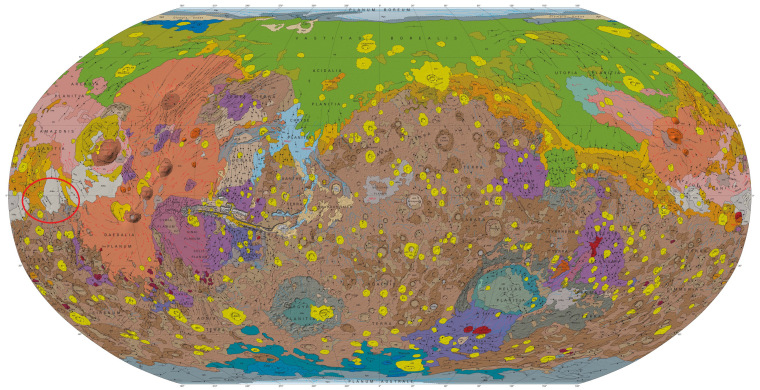It's a lovely and intriguing idea. It's also unlikely to pan out. Indeed, these homebody detectives just suffered another setback.

Mars has long been everyone's hands-down favorite in the search for extraterrestrial life. It's got rocky landscapes, National Park-worthy canyons, and a general appearance that resembles Arizona stripped of vegetation and convenience stores.
It's no wonder then that amateur explorers have spent years in front of their laptops scrutinizing this world for clues to life. The online photos they study — taken by a medley of rovers and orbiters — make up a rich corpus of imagery for these highly motivated sleuths. But few of them are looking for fungi or other back-burner biology. They hope to find evidence of clever beings that either visited Mars or were once Red Planet natives.
CRASHED ALIEN SPACECRAFT?
It's a lovely and intriguing idea. It's also unlikely to pan out. Indeed, these homebody detectives just suffered another setback. In a paper published recently in the "Journal of Geophysical Research: Planets," scientists at Johns Hopkins University offer a simple explanation for the odd topography of an artifact that some mistook for a crashed alien spaceship. They say the purported spacecraft is actually something only a geologist could love — the handiwork of ancient volcanism, not Vulcans.
The artifact is located in a region of Mars known as the Medusae Fossae Formation. It's a strange-looking geologic deposit the size of Alaska and Texas combined. It's also notable for the fact that radar signals aimed its way are only weakly reflected, a "stealth" attribute that some consider to be possibly unnatural. After all, stealth aircraft are engineered to be hard to see on radar. Had something or someone managed to do the same with the terrain of the Medusae Fossae?

The purported spaceship is big compared to our own rockets — about the size of the Notre Dame football stadium. Even so, it's nearly lost in the corrugated expanse of the Medusae Fossae Formation. But if you can find it, and if you screw up your eyes, it looks like a saucer-shaped craft that bungled its landing and slid into the Martian dirt. Extraterrestrial passengers — assuming there were any — either phoned home and were rescued long ago or disappeared into the hostile landscapes of the Red Planet.
Important, if true. Indeed, it would be as great a discovery as that of Columbus. But once again, the eyes and brains of people who want to believe this is visual evidence for aliens have shown themselves to be vulnerable to deception. The proof of that comes from the work of the Johns Hopkins researchers, who carefully determined the properties of the "landing site." They measured the average density of the material in Medusae Fossae, and it turns out to be low — only 1.7 times the density of water. That's lightweight compared to the average density of Earth's crust, which is 3.0 times that of water.
NO KLINGON CLOAKING DEVICE
Conclusion? Medusae Fossae is not solid rock, but layers of debris — volcanic ash that was spewed into the Martian skies long ago. Its low radar reflectance is not some manifestation of Klingon cloaking technology but what you'd expect from a pile of grainy, volcanic ejecta.
What does this say about the saucer artifact? According to Ross Beyer, a research scientist at the SETI Institute, the supposed spacecraft is "just a hill." It's some elevated topography that was swamped billions of years ago by all that volcanic debris, he said, a "lone small hill or knob that existed before the ash blanketed a lot of real estate. This may be the tip of a taller hill that was buried, and there may be other hills in this region that were not as tall and are buried completely, leaving only this one standing above the debris."
In other words, just like an iceberg, most of the suspected saucer's bulk is invisible — hidden by a sea of loose crud. It's ash, not a crash.
But look at the bright side. It's good to know that Mars is not such a dangerous extraterrestrial destination after all. Perhaps we should alert the aliens that, rather than heading for New Mexico and a crack-up in the desert, they should steer instead toward the fourth rock from the sun.
And for me and my colleagues — yes, it would be transformational to find proof of extraterrestrials, and frankly, hunting for artifacts is one way to do that. Just not this one!
This article was originally published at NBCNews.com





